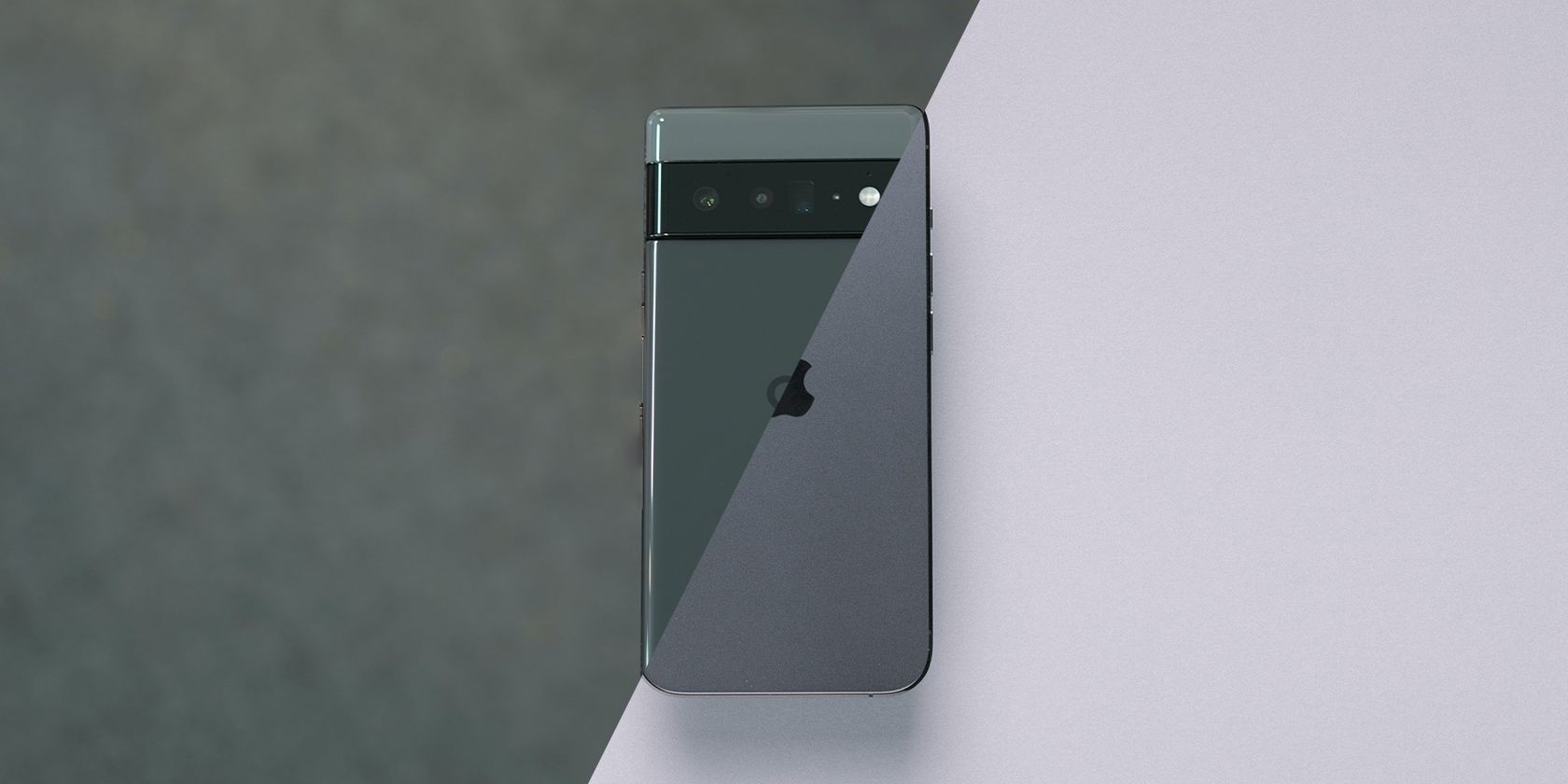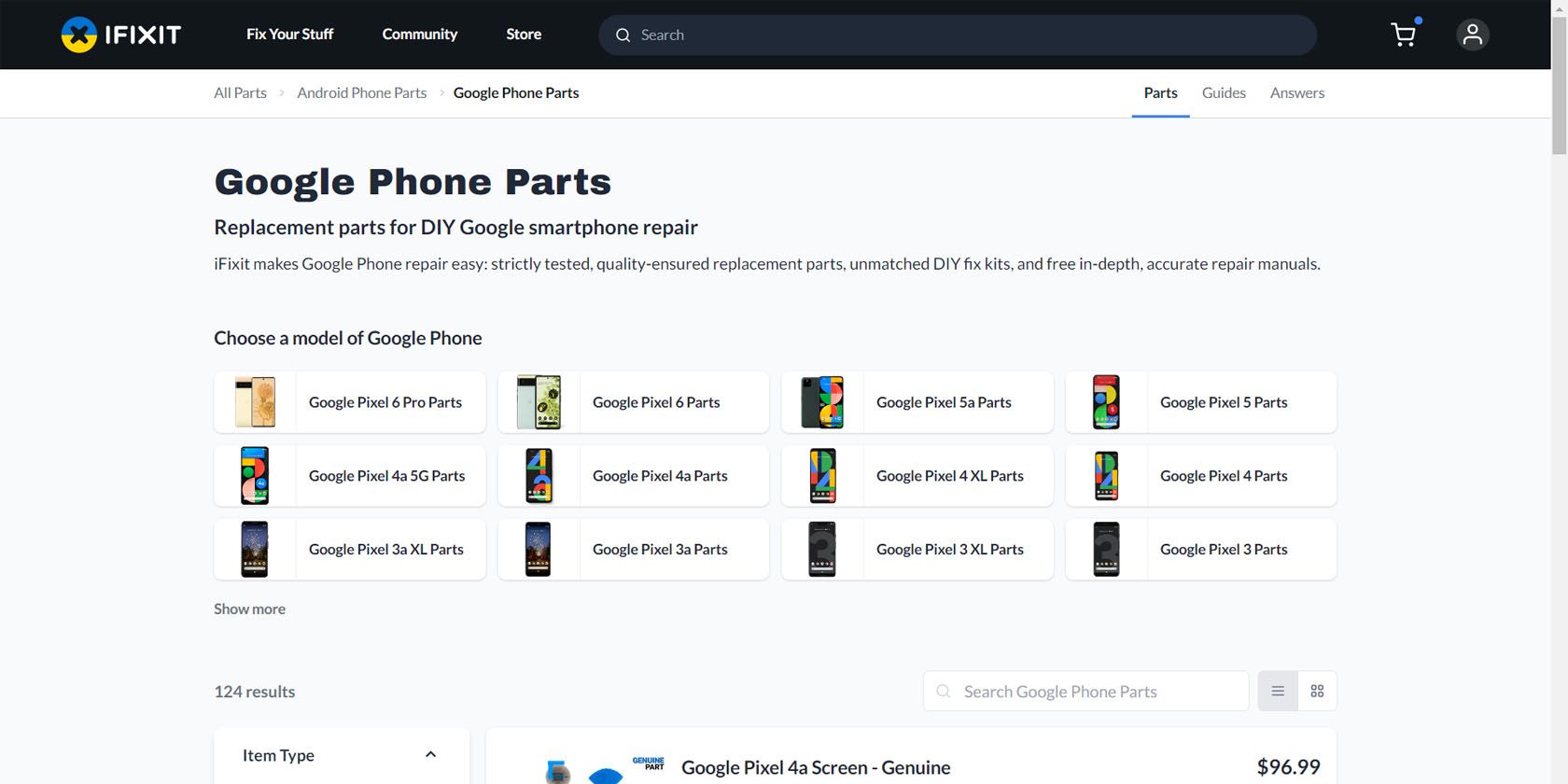Although smartphones are thinner, lighter, and more powerful nowadays, we also have one unwanted development: anti-repairability.
Many smartphone manufacturers, but most significantly, Apple, have historically instituted software blocks that disabled essential features, like FaceID.
Google is also guilty of this practice with the Pixel phones—with the Pixel 6 losing fingerprint reader functionality when the screen is replaced. Nevertheless, Google was said to have done this because it makes the fingerprint sensor less accurate.
So, which is more repairable? Let's compare the iPhone 13 and the Pixel 6.
Repairing the iPhone 13
Although Apple has historically made the iPhone challenging to repair, like gluing down parts or causing the phone to lose functionality once you replace a part, they're still relatively easy to replace. The phone's screen and batteries, one of the first things that usually need replacement, are readily accessible once you open the phone.
However, once you replace them, you're bound to run into warnings and lose access to FaceID unless you have an authorized Apple repair center do the replacement. So, if you've recently had your iPhone repaired and FaceID isn't working, that's the most likely problem.
If you want to repair the phone yourself or have an unauthorized repair center replace your parts instead, you must have access to a compatible screen programmer. And while Apple released iOS 15.2, which returns access to FaceID, you still get a warning that you're not using a genuine Apple part and won't get True Tone back. The same is true with battery replacements—the battery may work, and you won't lose any functionality, but you get an annoying notification on your phone that won't go away.
Repairing the Pixel 6
The Google Pixel 6 has way better repairability than the Apple iPhone 13. According to iFixit, instead of using glue to attach the screen to the rest of the phone, Google used a plastic frame to help keep it secure and make it easy to replace in case you need to remove the screen.
Whenever you replace the screen on the Google Pixel 6, its fingerprint reader will stop working. Google says the phone deactivates it because the reader needs to be calibrated after such repairs. Thankfully, it's easy to reactivate the under-display fingerprint scanner—just visit the Google Pixel - Update and Software Repair, scroll down to the bottom of the home page, and click on Install fingerprint calibration software.
Although the battery on the Pixel 6 is designed to be replaced, it's difficult to do so. The adhesive Google used is particularly doing well at holding down the battery, and the built-in plastic strap on the Pixel 6 battery is no help. If you're planning to replace your phone's battery, give it a healthy dose of isopropyl alcohol to soften the glue. Aside from that, you'll find that the Pixel 6 uses all standard T3 screws for all other parts, so you don't need multiple drivers to get repairs done.
The Rise of Official Self-Repair
In April 2022, Google and Apple both released self-repair kits for their phones. In an announcement on The Keyword from April 8, 2022, Google said it partnered with iFixit to provide genuine parts, tools, and guides for its consumers. You can now order these for the Google Pixel 2 to the Google Pixel 6 Pro. They even pledged that all future Google Pixel models would have replacement parts available on iFixit for all countries and territories where the Pixel is sold.
A few weeks later, Apple launched the self-repair program. They created the Self Service Repair Store that offers over 200 parts, tools, and manuals, allowing users to conduct the most common repairs—screen, battery, and camera replacement.
However, Apple limits these repairs to the iPhone 13 and iPhone 12 model lineup and the iPhone SE (3rd Generation). So, if you're using an older iPhone, which is more likely to need repair, you still have to visit an authorized Apple repair shop to get it fixed.
iPhone 13 vs. Pixel 6: Self-Repair Comparison
With the two of the biggest smartphone players in the market announcing their self-repair services, you might think that the right-to-repair movement just won a huge success. However, it is not what it seems. If you look beneath the surface, you'll find that Apple's self-repair program is set up to fail unless it makes major changes.
Looking at Apple Self-Repair
Although Apple now lets you service your own devices, you still have to get official parts and tools from it. Not only that, you can only order parts and tools for the following six repairs: battery, bottom speaker, camera, display, SIM tray, and the Taptic engine. If your phone gets other damages, like broken back glass, you still have to bring your phone to an authorized repair shop to get it fixed.
Apple's tools are also prohibitively expensive if you're planning to buy them. And although you can rent them, you must return them within a week, or else you will forfeit your $49 deposit. You could also buy these tools if you plan to launch an iPhone repair side-hustle, but it'll cost you. The tools you need just for an iPhone 13 Pro battery replacement will set you back over $1,100—and you still have to buy other, non-proprietary tools not sold in Apple's online store.
Furthermore, you can't stock up on spare parts. Before ordering any part or tool from the Self Service Repair Store, you must have the serial number or IMEI of the phone you're repairing. So, if you want a "semi-authorized" iPhone repair shop, your customers will have to wait for shipping until you can start a repair.
Repairing Google Pixel Phones With iFixit
On the other hand, Google outsourced its self-repair facility to iFixit. As a result, you can get official parts and tools bundles for Google Pixel phones from iFixit. In fact, you can order specific parts and tools as needed; no Serial number or IMEI code is required.
The Google Pixel repair kits from iFixit are also way cheaper. The Apple iPhone 13 Pro Max battery replacement kit costs $71.00 plus the $49.00 rental fee for the tools, while the battery replacement kit for the Google Pixel 6 Pro only costs $49.99—and you get to keep the tools.
Apple Still Lags Behind When It Comes to Repairability
Self-repair has made it easier for people to fix their devices instead of replacing them when it gets damaged. However, the fact that Apple makes it expensive and challenging to repair iPhones means many people will still elect to replace their devices.
Fortunately, Google has made it easier to repair Pixel phones via third-party services. Furthermore, it's far more affordable, so if your Pixel phone gets damaged, it's still economically viable to repair it rather than replace it with a new device altogether.
After all, even a device as small and pocketable has a significant carbon footprint. So, if a smartphone company says they're doing this and that to gain net-zero carbon emissions and they're not doing everything in their power to make third-party repair accessible and affordable, then they're not doing enough.


